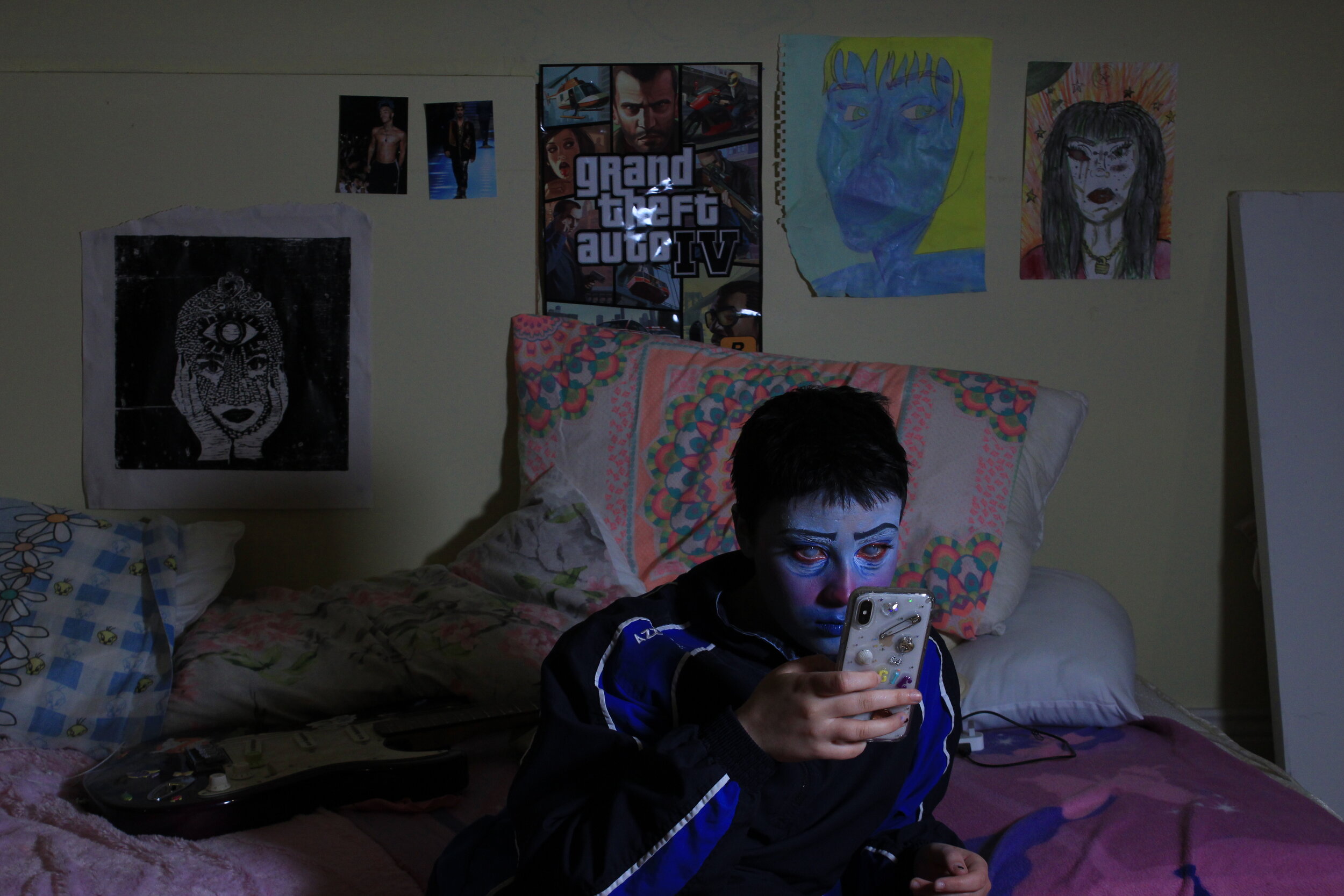Kitsch Doom
“Working between performance, video, photography, and printmaking the themes researched in my art practice are gender, identity, the body, and social expectations. Informed by Judith Butler’s theory of performativity and Mary Douglas’ theory of the social and individual identity, I create fictional characters through photography based on these themes and theories. I perform these characters myself but also invite volunteers online in the local area to perform their own characters that we work together to create. Inspired by Jackson Pollock’s ethos for his action paintings and allowing elements of chance to create this new body of work, the characters are created spontaneously during an unconscious state of mind and the narratives naturally fall into place.
Recurring themes in the work are the theatricality and exaggeration in the characters. There are a number of reasons for the use of theatrical props and characters in the work. Firstly, I want the characters to express the performativity of gender that Butler writes about, secondly I want to represent the constrained social body, Douglas argues that bodily control is an expression of social control. This brings me to the interest in the intersection of theatre and performance art, and if there is one?
Recently while reflecting on the work I have come to realise that I am interested in the challenges of obtaining gender-fluidity and the hard barrier between theatre and performance art, and questioning whether there can be a fluidity there as well? The reason for this interest is because I can see similarities between these two polar opposites. I believe that these similarities can be compared to how it feels to be in a social situation. It’s an awkward inner experience (at times) of performing a role while simultaneously trying to be your individual self, when appropriate. The fluctuation of these two aspects of identity and this in-between space of performing and being your individual self is the experience I am trying to convey throughout the work and through the characters. The characters also fluctuate between acting in front of the camera with a script in mind and then outtakes (out of character) are also included into the video performances in order to mix both reality and fiction so they blend into the one performance. I want these to blend in a way that it is difficult to know which one you are looking at, to create an experience of fluidity between performance and an individual expression of identity and the bodily pressures and restraints this causes. The connection of performance, reality and fiction.
The use of bondage in the work is an important element to note because it represents the inherent relationship of sexuality and gender, these traits have been instinctively interlinked. This link refers me back to Butler’s theory of performativity and the importance of clothing as part of this performance of gender, this performance of gender is about expressing a sexuality to others. Clothes are an integral part of this performance of sexuality and act as a costume for yourself and for others, they also can act as a mask to conceal a real identity. The exaggerated use of bondage refers to the experience of clothing acting as a “costume” that is heavily loaded with sexual connotations.
The characters are in a world where traditional roles and ideas still linger but they are rapidly trying to move on from them. This fictional world acts as an unconscious reflection of the one we are living and experiencing right now. The work occupies the space that lies in-between performance and theatre, sexuality and gender and the social body and individual freedom.”









